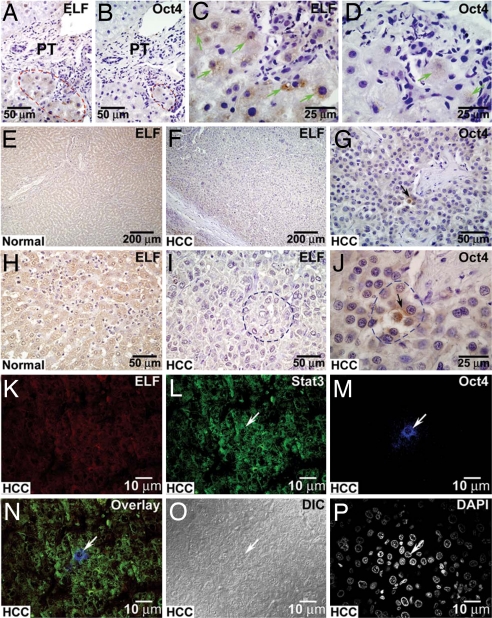Fig. 2.
Identification of liver progenitor/stem cells in posttransplant human liver and HCC tissues. Immunohistochemical labeling of posttransplant human liver tissues taken from living donor liver transplant recipient 4 weeks after transplantation. (A–D) The tissue is labeled for the presence of ELF (A and C) and Oct4 (B and D). Sections are taken consecutively to enable identical localization. (E–J) Equivalent areas are marked by red dotted lines, and green arrows point to the positive labeling. Immunohistochemical labeling of normal human liver (E and H) and HCC tissues (F, G, I, and J). The loss of ELF is evident when comparing the immunohistochemical labeling of normal (E and H) and HCC samples (F and I). Strikingly, there are small pockets of three to four Oct4 positively stained cells present in the midst of transformed hepatocellular cells (G and J, arrows). These Oct4-positive cells are stained negatively for ELF (I, area marked by blue dotted line). (K–M) Confocal images of human HCC labeled to highlight prodifferentiation TGF-β signaling component ELF (K) and progenitor cell proteins Stat3 and Oct4 (L and M). (N, white arrow) The overlay image demonstrates a cell that labeled positively for Stat3 and Oct4 but lacks nuclear expression of ELF. (O) DIC represents transmission image of this cluster of cells. (P) DAPI represents nuclear labeling. The white arrow points to the nucleus of the HCC progenitor/stem cell lacking ELF. PT represents portal tract.

